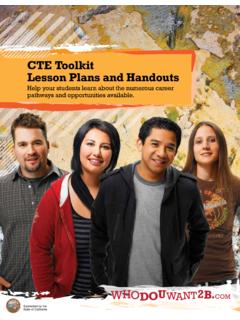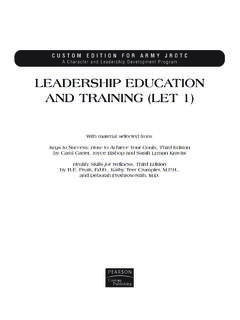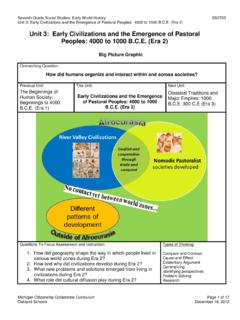Transcription of Evaluating MYP unit plans - FISJB LIBRARY
1 Evaluating MYP unit plans Evaluating MYP unit plans Middle Years Programme Evaluating MYP unit plans Published December 2016. Published by International Baccalaureate Organization 15 Route des Morillons 1218 Le Grand-Saconnex Geneva, Switzerland Represented by IB Publishing Ltd, Churchillplein 6, The Hague, 2517JW The Netherlands International Baccalaureate Organization 2016. The International Baccalaureate Organization (known as the IB) offers four high-quality and challenging educational programmes for a worldwide community of schools, aiming to create a better, more peaceful world. This publication is one of a range of materials produced to support these programmes. The IB may use a variety of sources in its work and checks information to verify accuracy and authenticity, particularly when using community-based knowledge sources such as Wikipedia. The IB respects the principles of intellectual property and makes strenuous efforts to identify and obtain permission before publication from rights holders of all copyright material used.
2 The IB is grateful for permissions received for material used in this publication and will be pleased to correct any errors or omissions at the earliest opportunity. All rights reserved. No part of this publication may be reproduced, stored in a retrieval system, or transmitted, in any form or by any means, without the prior written permission of the IB, or as expressly permitted by law or by the IB's own rules and policy. See IB merchandise and publications can be purchased through the IB store at Email: International Baccalaureate, Baccalaur at International and Bachillerato Internacional are registered trademarks of the International Baccalaureate Organization. IB mission statement The International Baccalaureate aims to develop inquiring, knowledgeable and caring young people who help to create a better and more peaceful world through intercultural understanding and respect. To this end the organization works with schools, governments and international organizations to develop challenging programmes of international education and rigorous assessment.
3 These programmes encourage students across the world to become active, compassionate and lifelong learners who understand that other people, with their differences, can also be right. Contents Introduction 1. How to use this document 3. Inquiry 4. Action 7. Reflection 11. Summary 12. Teaching context 13. Evaluating MYP unit plans Introduction For use in conjunction with MYP: From principles into practice (May 2014). The unit-planning process is an essential requirement of the MYP. To develop an MYP unit plan, teachers work collaboratively to establish the purpose of the unit; define the process of teaching and learning through inquiry; and reflect on the planning, process and impact of the inquiry. The MYP unit-planning process is an important expression of the inquiry cycle that frames teaching and learning in IB World Schools. Inquiry Action Reflection Figure 1. The inquiry cycle This document supports teachers and schools in implementing the MYP unit-planning process.
4 Its purpose is to prompt critical reflection that can lead to more effective teaching and learning. Before Evaluating the unit, make sure all required elements are complete. Does the unit include the following? . Name of the teacher(s). MYP subject group and the specific discipline (If the unit is part of an integrated course, note which subjects or disciplines are integrated. For modular courses, indicate which discipline the module addresses.). Unit title (a topic, question, content requirement or big idea). Approximate number of guided learning hours (total). Key concept Related concept(s). Global context and specific exploration Subject-group objectives and specific relevant strands Task-specific clarification (description of how teachers helped students understand the criteria and level descriptors). Evaluating MYP unit plans 1. Introduction Does the unit include the following? . Content that specifies topics and/or local or national standards Learning experiences/teaching strategies, differentiation, formative assessment Resources Reflections developed before, during and after teaching 2 Evaluating MYP unit plans How to use this document Evaluating MYP unit plans can be used for self-assessment, collaborative peer review and standardizing feedback from the IB's Building Quality Curriculum service.
5 Feedback in this process is structured according to the inquiry action reflection cycle that informs teaching and learning in all IB programmes and organizes the required elements of the MYP unit-planning process. Characteristics of effective implementation are arranged according to a developmental scale that moves from emergent to capable to exemplary. Moving from lower to higher levels of successful implementation, this continuum generally parallels terminology that all MYP learners can use to describe increasing levels of competence. In educational terms, feedback based on this document is designed to be formative it should be given and received with the intention of prompting reflection that can lead to further personal and organizational growth. Beginning/developing: emergent implementation that may require substantial revision in order to create an effectively planned and documented unit of inquiry. These units may benefit from extended collaboration that improves clarity, provides greater detail and develops greater coherence.
6 Using: capable implementation that demonstrates confidence in planning and documenting inquiry using the MYP collaborative unit-planning process. Sharing: exemplary implementation that provides a model of good practice that can inform and inspire the unit-planning process of other MYP teachers and schools. In planning the curriculum, teachers often move between inquiry, action and reflection; these inquiry-based aspects of curriculum planning are iterative and interrelated rather than strictly linear. The relationship between these aspects of teaching and learning is dynamic, and any aspect might provide the point from which teachers begin their planning and self-evaluation. The following elements of unit planning are numbered for reference and convenience only. Evaluating MYP unit plans 3. Inquiry The Inquiry section of the MYP unit planner identifies the purpose of the unit to ensure its alignment with MYP philosophy and requirements.
7 Statements of inquiry set conceptual understanding in a global context to frame classroom inquiry and direct purposeful learning. Statements of inquiry summarize what we will be learning and why in language that is meaningful to students. 1. Statement of inquiry Beginning/developing Using Sharing The statement of inquiry: The statement of inquiry: The statement of inquiry: may not include a clearly includes a key concept, includes a key concept, identifiable key concept, related concept(s) and a related concept(s), and related concept(s) and specific global context a specific, relevant and global context exploration engaging global context may mechanically connect clearly states a significant exploration concepts and global understanding that meaningfully connects key context in the statement combines key and related (broad) and related (deep of inquiry concepts in a meaningful disciplinary) concepts in offers limited potential statement of inquiry ways that students can for transferring has the potential to understand understanding beyond the develop transferable develops specific content of this unit understanding disciplinary knowledge uses language that might communicates in student- that supports transferable overwhelm students, limit friendly language that understanding their ability to engage with invites inquiry and establishes the unit's the inquiry or to articulate engagement.
8 Relevancy and long-term for themselves its purpose value by articulating a and value. clear, meaningful purpose for the inquiry represents creativity and appropriate complexity in its synthesis of concepts and global context. 4 Evaluating MYP unit plans Inquiry Inquiry questions are drawn from, and inspired by, the statement of inquiry. Factual, conceptual and debatable questions give shape and scope to the inquiry and promote critical and creative thinking. 2. Inquiry questions Beginning/developing Using Sharing Inquiry questions: Inquiry questions: Inquiry questions: show limited include examples of demonstrate clear understanding of the factual, conceptual and understanding of the distinction between debatable questions relationship between facts, factual, conceptual and are connected to the concepts and debates debatable questions concepts and global develop deep may have minimal context included in the understanding of concepts connection with each statement of inquiry and context combined in other and the purpose of describe multiple the statement of inquiry the unit as described in its pathways into the unit's offer pathways for diverse statement of inquiry subject matter/topic learners into the unit's may represent a single are appropriately rigorous.
9 Subject matter/topic pathway into the unit's represent appropriate subject matter/topic complexity that can help develop too many or too to develop critical and few questions that may be creative thinking too simple or too complex include teacher- and for the intended learners. student-generated inquiries help to prepare students to undertake summative assessment. Summative assessment task(s) provide evidence for assessing student achievement using required MYP subject-group criteria. 3. Summative assessment Beginning/developing Using Sharing The summative assessment The summative assessment The summative assessment task(s): task(s): task(s): has a limited connection relates clearly to the thoughtfully connects with the statement of statement of inquiry with the statement of inquiry addresses subject-group inquiry does not clearly address objectives addresses relevant subject-group objectives offers students a subject-group objectives may represent an meaningful opportunity by strand assignment that is not to demonstrate what they offers authentic, challenging enough or know, understand and challenging, open-ended is too complex for most can do and varied ways for learners students to demonstrate what they know, understand and can do Evaluating MYP unit plans 5.
10 Inquiry 3. Summative assessment Beginning/developing Using Sharing may not clearly describe clearly describes what thoroughly explains what students will do students will do to what students will to demonstrate their demonstrate their do to demonstrate understanding understanding understanding may offer limited scope can be differentiated to provides access to for differentiation to meet meet diverse learning reasonable adjustments diverse learning needs. needs. and inclusive assessment arrangements. MYP units aim to develop a range of approaches to learning (ATL) skills for thinking, self-management, social interaction, communication and research. Teachers identify the specific skills that students will develop through their engagement with the unit. 4. Approaches to learning (ATL). Beginning/developing Using Sharing ATL skills in this unit: ATL skills in this unit: ATL skills in this unit: provide students limited are specifically identified are specifically support for achieving the provide a focus for student identified and integrate unit's objectives self-evaluation and meaningfully with learning offer students limited reflection on personal engagements and opportunities to develop growth and development assessment tasks skills that support include some indication of offer students independent learning how the skills are taught opportunities to develop include brief identification and practised in the unit responsibility for their of how the skills are own learning through support progression of supported in the unit independent practice learning across MYP years.







